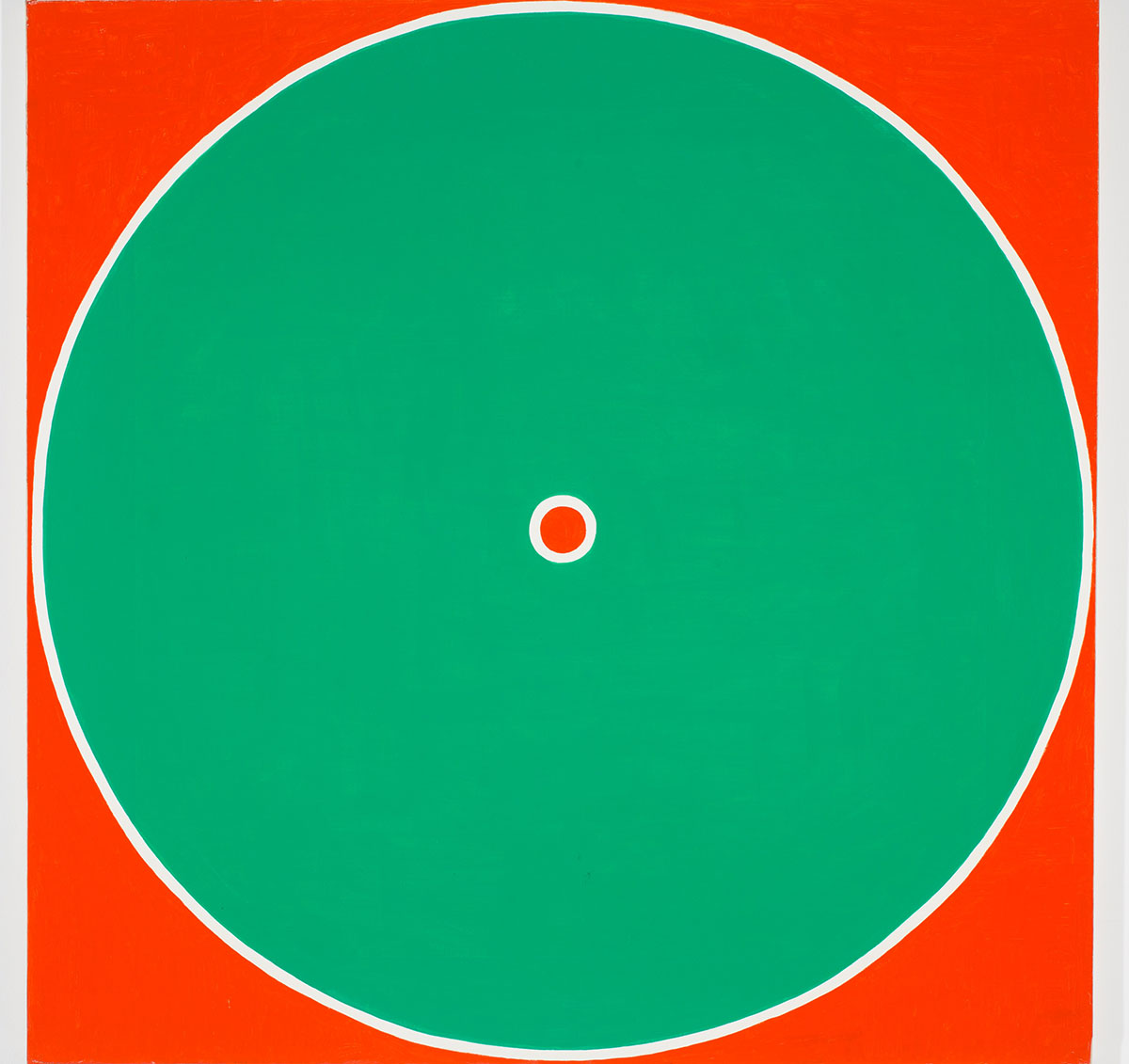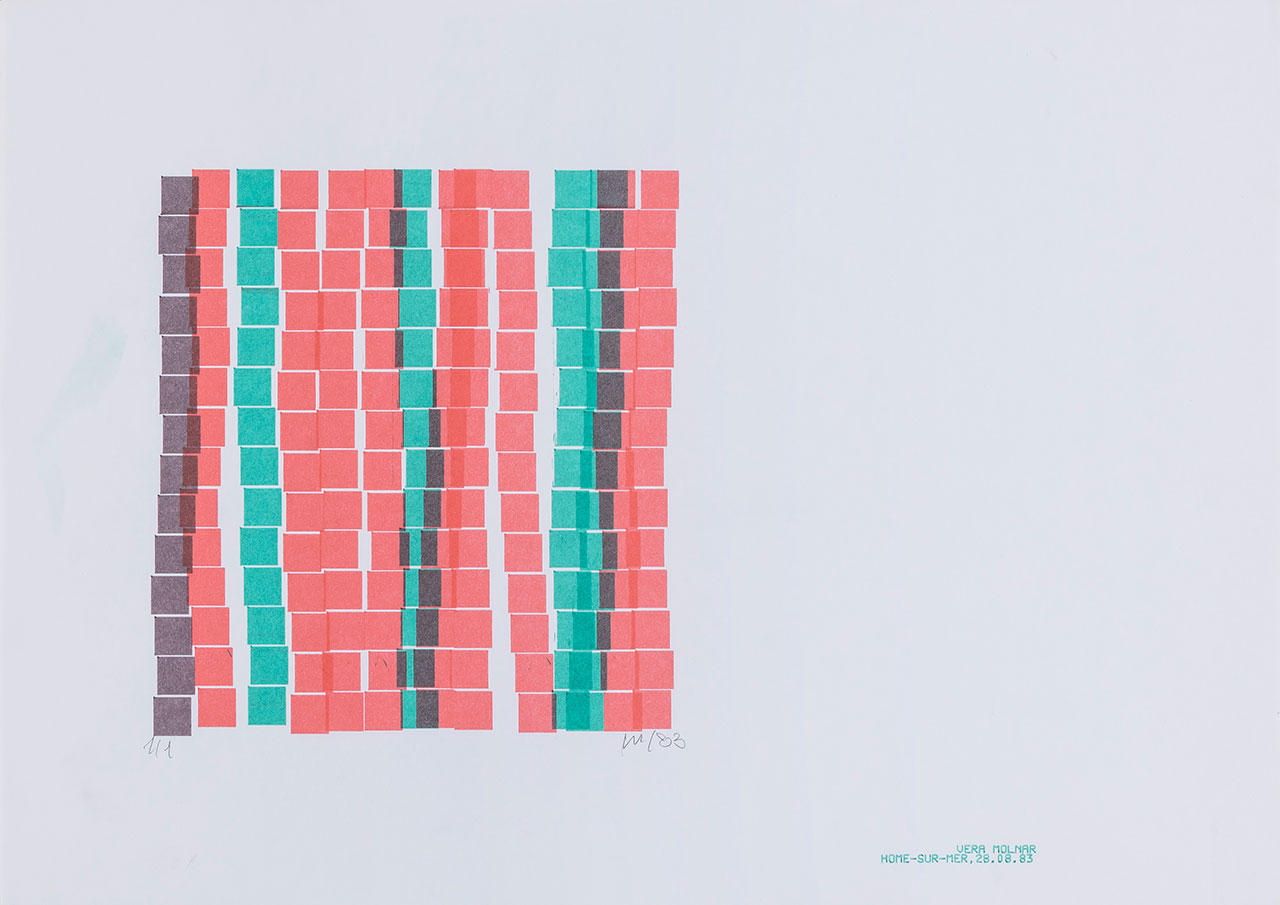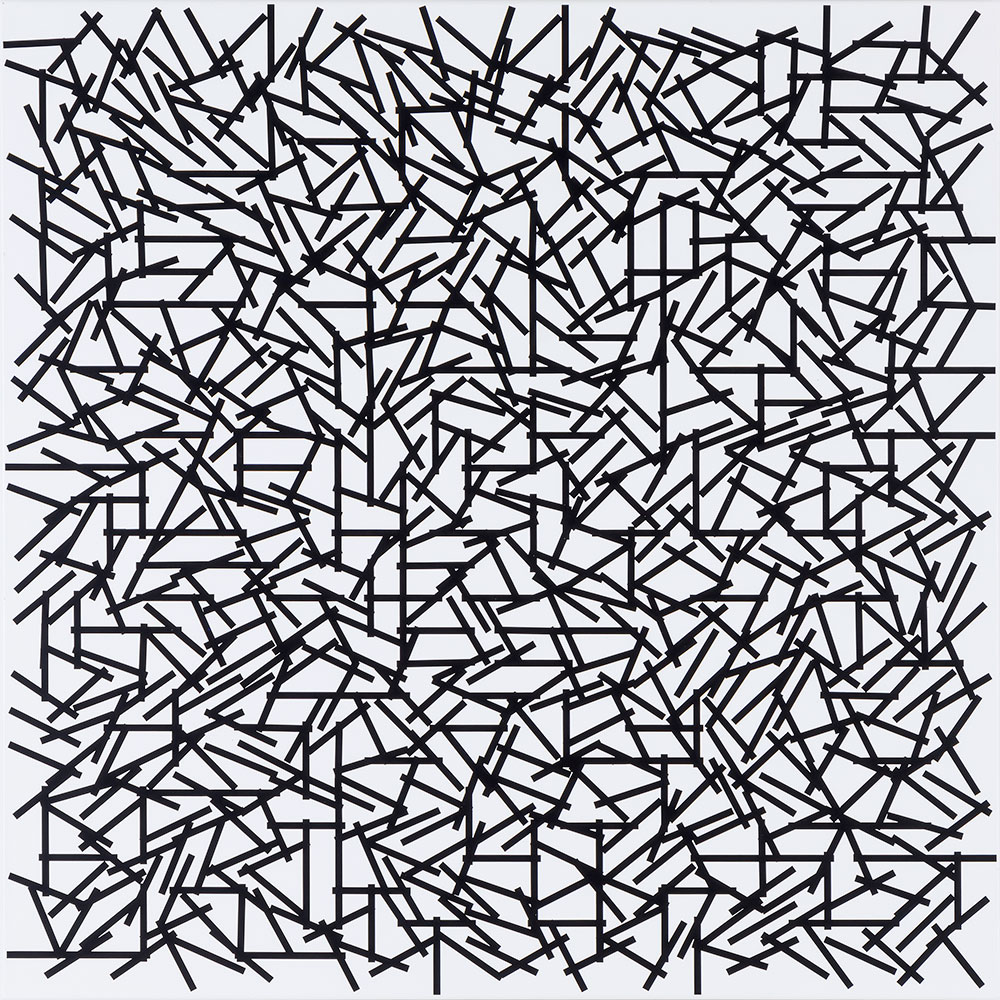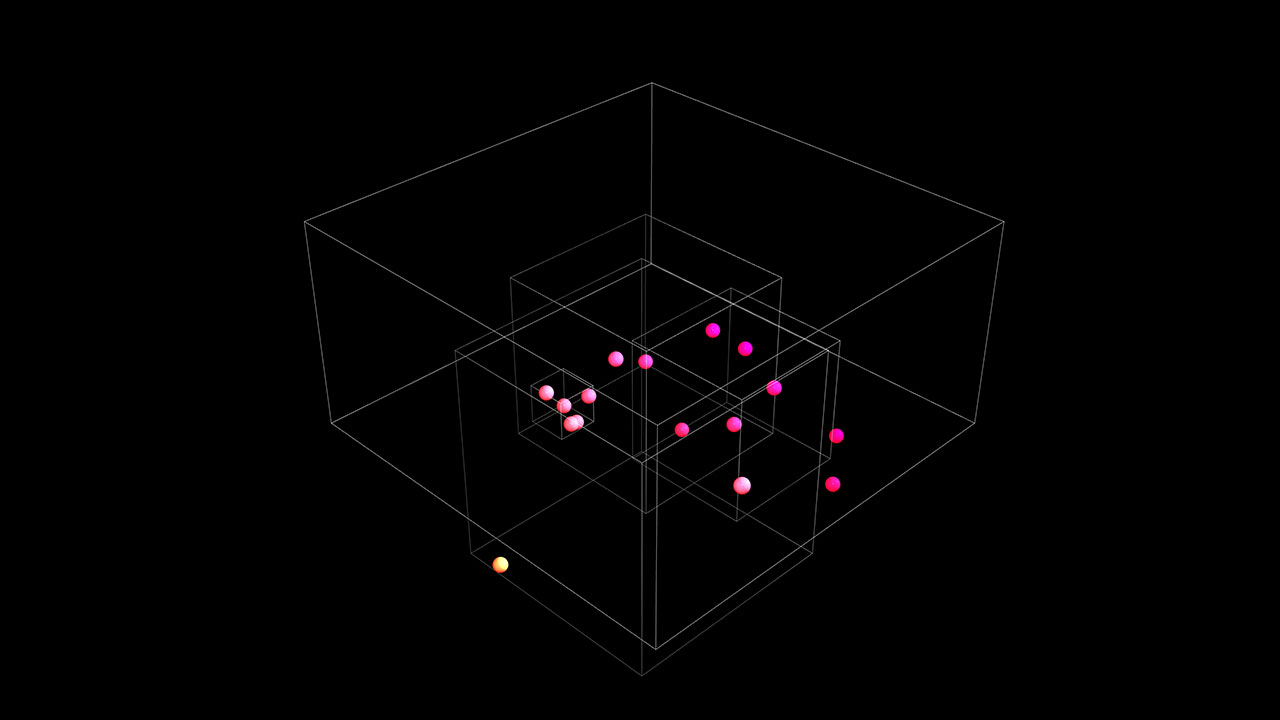ART CITIES: Budapest-Vera Molnar
 The Hungarian artist Vera Molnár was a pioneering figure in computer art and generative art. Molnár, who moved to France when she was in her twenties, was a crucial member of the French art scene exploring the relationship between technology and the visual arts. She was a cofounder of the Groupe de Recherche d’Art Visuel in 1961, which was dedicated to kinetic art, and then of Art et Informatique, a group dedicated to computer art.
The Hungarian artist Vera Molnár was a pioneering figure in computer art and generative art. Molnár, who moved to France when she was in her twenties, was a crucial member of the French art scene exploring the relationship between technology and the visual arts. She was a cofounder of the Groupe de Recherche d’Art Visuel in 1961, which was dedicated to kinetic art, and then of Art et Informatique, a group dedicated to computer art.
By Efi MIchalarou
Photo: Ludwig Museum Archive
The exhibition “À la Recherche de Vera Molnar”, marks the first stage of an international tour dedicated to the most influential pioneer of computer art. The exhibition pays tribute to the artistic legacy of Vera Molnar, who passed away shortly before her 100th birthday. The exhibition’s title refers to Vera Molnar’s series “À la recherche de Paul Klee”, recalling the artist’s experiments in examining art historical influences through her own creative methods and tools. Similar to the narrator of Marcel Proust’s novel sequence “À la recherche du temps perdu”, Molnar was interested not only in the mere recall of the past but also in its reinterpretation in the context of the present. Following this spirit, the two-part exhibition at the Ludwig Museum provides an overview of pivotal chapters in Vera Molnar’s career. Displaying unique and reproduced graphic series and paintings, the exhibition spans from the late 1960s to the present day, presenting the most significant themes and art groups of this unique body of work, tracing the transformations in Molnar’s line and form systems. Vera Molnar’s works are based on programmed algorithms, constructed from basic geometrical forms. In the beginning, she experimented with quite simple algorithms. Her series works arise from small variations of the basic elements, adding what the artist calls “1% disorder.” Discovery and randomness played a significant role in her working method. For Molnar, the randomness generated by the computer revealed the horizon of possibilities, but the decision and choice always remained in the hands of the artist. Balancing on the border between order and disorder, her compositions combine the geometric formal language with playfulness and a personal, unique sensitivity. The other part of the exhibition introduces, for the first time worldwide, a special international group exhibition featuring works and unique reflections by invited internationally acknowledged artists. This section pays homage to Molnar’s legacy, and examines her impact on contemporary art.
Born in Budapest, Hungary, in 1924, Vera Molnár started creating art when she was eight years old and carried on studying both Art History and Aesthetics at the Hungarian University of Fine Arts. Molnár, also known by her maiden name, Gaks Vera or GV, had already established a body of conventional work when she began creating the generative and computer art for which she became best known. After spending a scholarship in Rome, she moved to Paris in 1947 with François Molnár, who would later become her husband. The two quickly became a part of the Hungarian artistic diaspora. They spent their evenings in the Montparnasse café Le Select, where she met Victor Vasarely, Fernand Léger, Kandinsky, Brancusi, and other famous contemporaries. In 1948, inspired by Albrecht Dürer’s etching titled “Melancholy”, Molnár started producing geometric drawings more actively. Between 1959 and 1968, she worked with a method she referred to as machine imaginaire, a creative process with strict sets of rules that replaces humans in the artistic creation. Molnár has been engaging with the potential of computers in art since 1968 when she first had access to a computer at a Sorbonne research lab. She learned how to program in the rudimentary language Fortran, which gave her the freedom to feed the computer countless algorithmic variants and to print repetitive geometric shapes and abstract images with a plotter printer. A new type of computer with a screen was introduced in 1974, enabling Molnár to promptly examine the results of her code, identify errors, and modify them. She used the computer as an accelerator of artistic creation and also as a means of breaking away from the traditional concept of art. In 1979, she worked at the Atelier de Recherches des Techniques Avancées (ARTA) at the Centre Pompidou. Between 1980 and 1990, she was an associate professor at the Center de Recherche Experimental et Informatique des Arts Visuels in Paris. Her friend, François Morellet encouraged her to show her works at Galerie Oniris in Rennes in 1995, and she has been represented by the gallery ever since. Molnár’s artwork is frequently displayed in major museums, galleries, and art fairs, most recently at the 2022 Venice Biennale.
Exhibiting Artists: Refik Anadol, Arno Beck, Snow Yunxue Fu, Mario Klingemann, Patrick Lichty, Frieder Nake, Casey Reas, Antoine Schmitt, Erwin Steller, Tamiko Thiel And /P, U2p050, Iskra Velitchkova, Aurèce Vettier, Mark Wilson, Samuel Yan
Photo: Vera Molnar, A kör négyszögesítése (Squaring the Circle), 1962–1964, oil on canvas; 110 x 110 cm, © Courtesy of the MNB Arts & Culture
Info: Curators: Richard Castelli, Máté Zsófia, Ludwig Museum, Komor Marcell utca 1, Budapest, Hungary, Duration: 10/2-14/4/2024, Days & Hours: Tue-Sun 10:00-18:00, www.ludwigmuseum.hu/



